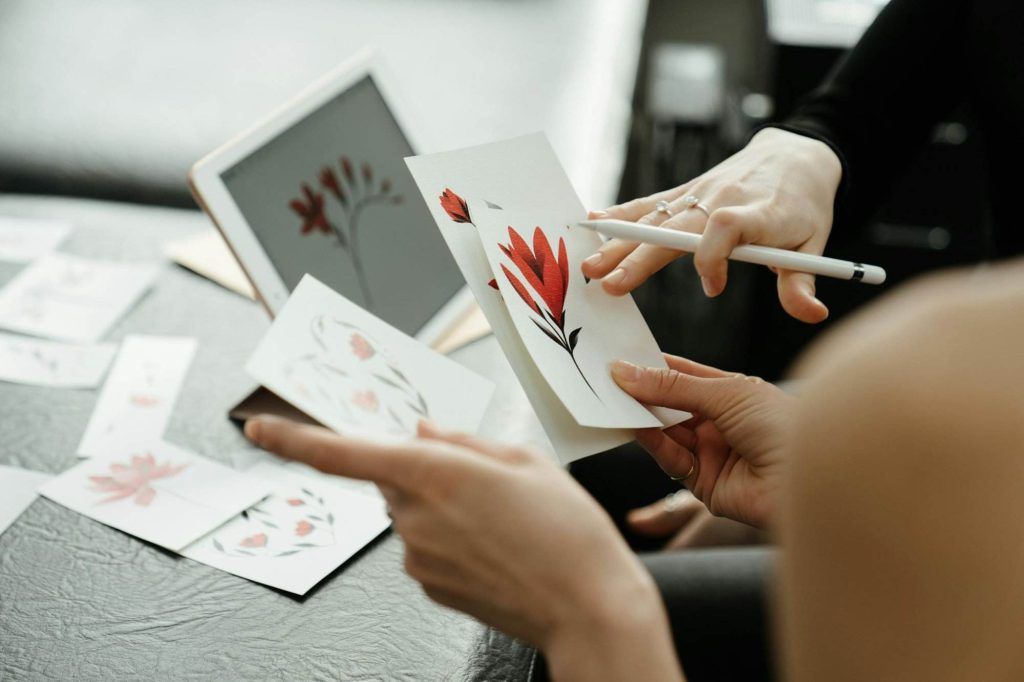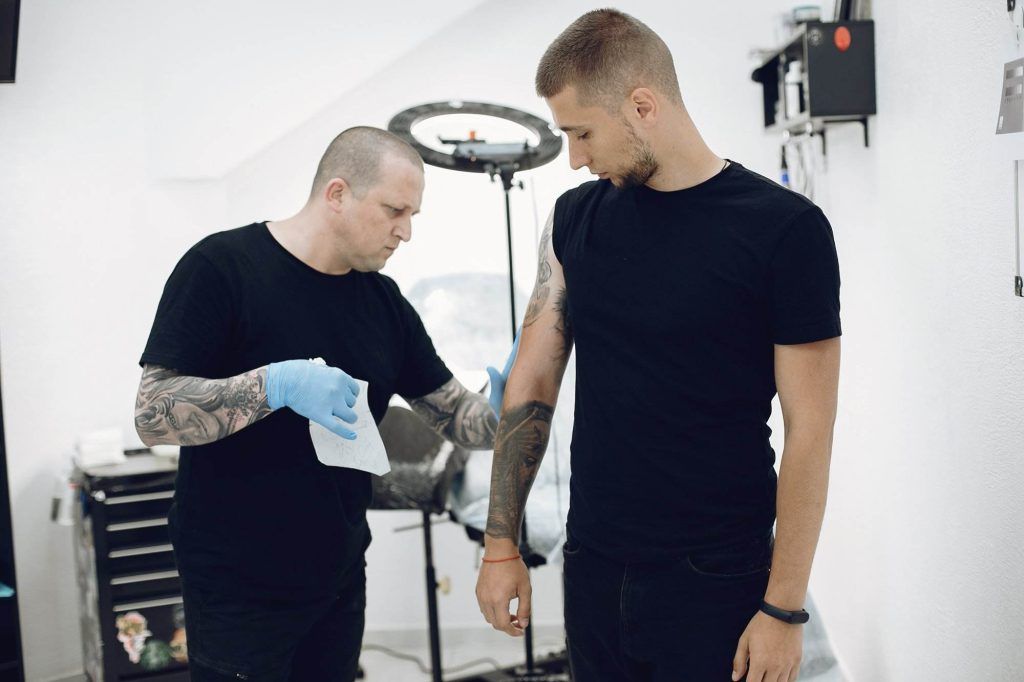Understanding Tattoo Etiquette
Tattooing is not just an art form; it’s a collaborative experience that relies on mutual respect and understanding between the client and the artist. As you prepare for your tattoo journey, understanding the importance of etiquette can enhance the experience and result in a piece you will be proud of for life.
Respecting the Artist
One of the first principles of tattoo etiquette is to respect the tattoo artist. Each artist invests not only their time but also their creativity, skill, and personal touch into every design. This can be achieved through:
- Acknowledging Expertise: Understand that artists have spent years honing their craft. Trust their guidance when it comes to design suggestions, placement, and sizing.
- Being On Time: Arriving late can disrupt the artist’s schedule and affect other clients. Punctuality shows professionalism.
- Avoiding Criticism: While everyone is entitled to their opinion, criticizing an artist’s work can be disheartening. Approach any concerns with constructive feedback rather than negativity.
Communication is Key

Open and effective communication can make or break your tattoo experience. Before and during the appointment, ensure that you are not only expressing your ideas but also listening actively to the artist. Here are some tips for better communication:
- Share Your Vision: Come prepared with ideas and references, but allow the artist to interpret your vision with their creative expertise. This collaboration can yield better results than a rigid, unyielding concept.
- Ask Questions: If you’re unclear about the process, ask. Whether it’s about what to expect during the tattooing process or aftercare guidelines, engaging with the artist will foster a better understanding.
- Stay Open-Minded: Accept feedback regarding design or placement. Your artist may offer insightful suggestions that enhance the overall piece.
By respecting the artist and maintaining open lines of communication, clients set the stage for a productive and enjoyable tattoo experience. This foundational respect leads to a more fulfilling collaboration and results that reflect the artistry involved.
Before Your Appointment
As you gear up for your tattoo journey, the preparations you undertake before your appointment can significantly impact the outcome. Understanding the nuances of design and placement, along with maintaining hygiene and care, will ensure a smoother process and a piece you’ll love for years to come.
Design and Placement Considerations

Choosing the right design and placement for your tattoo is crucial. This decision is ultimately lifelong, never to be taken lightly. Here are some factors to keep in mind:
- Personal Significance: Opt for designs that hold meaning for you. Whether it symbolizes a milestone, a loved one, or your unique personality, a significant design will bring you joy for years.
- Size and Visibility: Think about how large you want the tattoo and where you’d like it placed. Visible locations can impact your personal and professional life. Here are three common placement options:
- Forearm: Great for showcasing your tattoo.
- Back: Ample space for larger designs.
- Ribcage: Offers a more discreet option, but can be painful.
- Consultation with Artist: Utilize this time for brainstorming. Artists can provide valuable insights into how certain designs translate onto skin, taking into consideration body curvature and movement.
Hygiene and Care Preparations
Proper hygiene and care don’t just start once you get the tattoo; they begin well before your appointment:
- Stay Hydrated: Drink plenty of water a few days leading up to your appointment. Staying hydrated helps your skin remain elastic and healthy.
- Avoid Alcohol and Blood Thinners: In the days prior, refrain from consuming alcohol or aspirin as they can thin your blood and increase bleeding during the tattooing process.
- Skin Care: Moisturize the area where you’ll get tattooed, ensuring your skin is supple and ready for ink. Avoid sun exposure to prevent sunburn, which can complicate the tattooing process.
- Dress Comfortably: On the day of the appointment, wear loose-fitting clothing that allows easy access to the tattoo area. Opt for breathable fabrics to enhance comfort throughout the process.
By paying attention to these design considerations and hygiene practices before your appointment, you set the stage for a successful tattoo experience. The more prepared you are, the more you can relax and enjoy the transformation that lies ahead.
During the Appointment
With preparations completed, it’s finally time to sit in the chair and bring your tattoo vision to life. This stage is marked by excitement, but it’s essential to remain calm and focused. Two key aspects of this experience include sitting still and following the artist’s instructions and managing any pain or discomfort that may arise.
Sitting Still and Following Instructions
Once you’re in the studio, it’s crucial to remember that sitting still plays a significant role in achieving a clean and precise tattoo. Here are some guidelines to help you during this time:
- Stay Relaxed: Take a few deep breaths to steady yourself. A tense body can intensify pain and make it harder for your artist to work.
- Follow Directions: Your tattoo artist may ask you to adjust your position or hold still at certain moments. Listening to their instructions helps the process flow smoothly and ensures the best possible outcome.
- Use Signal Words: Discuss beforehand if you’ll use a specific signal word or gesture. This can let the artist know if you need a break or if you’re feeling any discomfort without interrupting the flow of work.
Handling Pain and Discomfort
Pain and discomfort are common during the tattooing process, but there are ways to manage it effectively:
- Acknowledge the Sensation: Accept that some pain is part of the experience. Many people describe it as a sharp sting or a burning feeling, which fades as the session continues.
- Breathe Deeply: Try employing breathing techniques similar to those used during meditation or yoga. Inhale deeply through your nose and exhale slowly through your mouth to help manage the sensation.
- Distraction Techniques: Engage in conversation with your artist or bring headphones to listen to music or podcasts. This can help divert your focus from the discomfort.
- Take Breaks: If the pain becomes overwhelming, don’t hesitate to ask for a short break. A few minutes can make a world of difference and rejuvenate your mindset.
By effectively sitting still and managing any discomfort during your appointment, you contribute positively to the tattooing process. Staying engaged with your artist and utilizing pain management strategies ensures a successful experience leading to a beautiful final product.
Aftercare Guidelines

As your tattoo appointment wraps up, the next crucial stage begins: aftercare. Proper care of your new tattoo ensures it heals correctly and maintains its vibrant appearance for years to come. Focusing on effective cleaning and moisturizing, along with avoiding sun exposure and swimming, will help safeguard this piece of art on your skin.
Proper Cleaning and Moisturizing
After receiving your tattoo, one of the first things your artist will likely emphasize is the importance of proper cleaning and moisturizing. Follow these guidelines:
- Initial Cleaning: Once you’re home, gently remove the bandage according to your artist’s instructions, typically after a few hours. Use lukewarm water and fragrance-free soap to carefully wash the tattoo. Avoid scrubbing; instead, use your fingertips to cleanse the area gently.
- Pat Dry: After cleaning, softly pat the tattoo dry with a clean towel. Avoid rubbing as this can irritate the skin.
- Moisturizing: Apply a thin layer of an artist-recommended tattoo ointment or fragrance-free moisturizer to keep the skin hydrated. This is critical in the first few weeks, as it helps promote healing and keeps the tattoo vibrant.
- Reapply Regularly: Throughout the healing process, reapply your moisturizer 2-3 times daily or as needed. Keeping your tattoo moist is essential for reducing scabbing and itching.
Avoiding Sun Exposure and Swimming
While your tattoo is healing, protecting it from the sun and avoiding swimming is vital to ensure it heals properly:
- Keep it Covered: For the first couple of weeks, avoid exposing your tattoo to direct sunlight. Wearing long sleeves or using a bandage can provide essential protection.
- Sunscreen Application: Once the tattoo begins to heal (typically after two weeks), always apply a high-SPF sunscreen on the tattoo when going out to prevent fading.
- Swimming Precautions: Steer clear of pools, hot tubs, and natural bodies of water for at least two weeks post-tattoo. Chlorine and bacteria present in water can lead to infection and compromise the tattoo’s visual integrity.
By adhering to these aftercare guidelines, you are taking proactive steps to ensure your tattoo heals beautifully and retains its color and clarity. Remember, proper care equals lasting results, so treat your new ink with the care it deserves.
Additional Etiquette Tips
As you journey through the world of tattoos, it’s important to keep in mind that etiquette extends beyond the appointment itself. Being well-versed in tipping practices and understanding booking and cancellation protocols can further enhance your experience and reflect your respect for the artist’s work.
Tipping Etiquette
Tipping your tattoo artist is a thoughtful way to show appreciation for their artistry and skill. Here are some general guidelines for tipping:
- Standard Tip Range: Just like in other service industries, tipping your tattoo artist typically falls between 15% to 20% of the total cost. If you are particularly pleased with the result, don’t hesitate to tip even more.
- Consider Complexity and Time: For larger or more intricate designs that require considerable time and expertise, consider adjusting the tip accordingly. A higher tip can acknowledge the effort put into a challenging tattoo.
- Cash is King: While some shops may allow you to add the tip to your card payment, offering cash can be appreciated, as it allows the artist to receive the full amount without card processing fees.
- Show Appreciation: A good tip not only incentivizes excellent service but also contributes to fostering a positive relationship with your artist for future appointments.
Bookings and Cancellations Protocol
Understanding the rules surrounding bookings and cancellations will help facilitate a smoother process and respect everyone involved in the tattoo community. Here’s what you shouldn’t overlook:
- Secure Your Spot: Most studios require a deposit to book an appointment. Understand that this deposit often goes toward the final cost of the tattoo, ensuring commitment from both the client and the artist.
- Advance Notice for Cancellations: If you need to cancel or reschedule, communicate this to the studio as soon as possible—ideally 48 hours in advance. Many artists have waiting lists, so giving notice allows them to fill the spot.
- Understand the Policy: Each shop has its own cancellation policy regarding deposits. Familiarize yourself with these guidelines to avoid misunderstandings. Some might keep the deposit for last-minute cancellations, while others may allow a rescheduling.
By embracing these additional etiquette tips around tipping and appointments, you not only show respect for the artists and their craft but also contribute positively to the tattoo culture as a whole. Engagement in these standards can help ensure that both clients and artists enjoy a rewarding experience.
